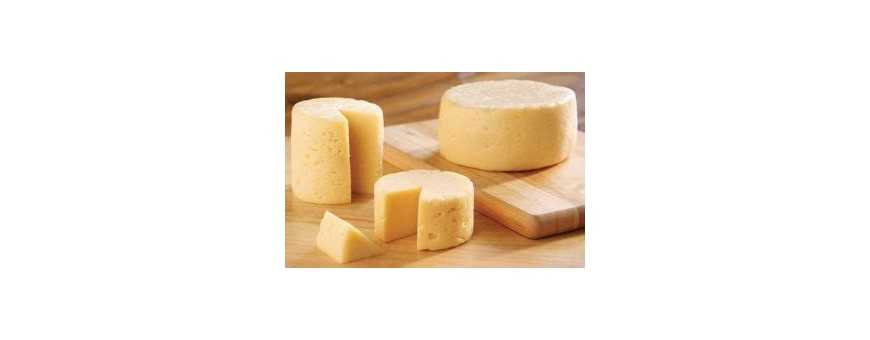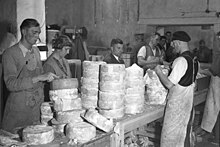Sorry for the inconvenience.
Search again what you are looking for
SOXLANA offers you everything you need. Be satisfied first and then pay later.

Tilsit is a semi-hard, washed rind cheese with 30 to 60% fat in the dry matter. It takes its name from the East Prussian town of Tilsit (now Sovetsk in Russia).
Country of origin Prussia
Tilsit region
Cow milk
Semi-hard paste
Named after Sovetsk
Preparation and specifics
It is a cheese made from cow's milk, soft and aromatic with a natural and moist rind of brown-red hue. Its paste is soft, very elastic, moist, and has small holes and irregular slits. It can be prepared from raw milk or from pasteurized milk, the raw milk version having more flavor. In its original version it is a tangy and full of flavor cheese while mass production now has very little taste. It comes in the form of a cylindrical grinding wheel, 8 cm thick, 25 cm in diameter and weighing 4 kg. Besides this classic shape, this cheese is more and more often presented in the form of blocks.
History
Manufacture of tilsit in Neukirch in the 1930s.

Manufacture of tilsit in Neukirch in the 1930s.

There were already cheese factories in Tilsit at the time of the Teutonic orders. The current cheese is the result of an improvement in the recipe by immigrants from Salzburg, Switzerland or Holland. It was often religious refugees, especially Mennonites, who answered the call of the King of Prussia to repopulate this region severely affected by a great plague in 1709-11.
Tilsit is developed from three local kinds of cheese, ragnit, briol and worien, Prussian versions of Limburg cheese. The creation of tilsit is often attributed to Mrs. Westphal who developed its production and codified its preparation around 1840.
The name of this cheese not being protected at the international level and having been a great success from the end of the 19th century, it is now manufactured outside its region of origin, in particular in Germany, Denmark and Switzerland and it has evolved differently. In the German Democratic Republic, it was marketed as “tollenser” so as not to refer to a German city that came under Russian control.
In Swiss
Swiss Tilsiter
In 1893, Hans Wergmüller, originally from Bisseg, emigrated to Prussia after the Franco-Prussian war of 1870. He settled in the city of Tilsit, on the coast of the Baltic Sea (today Sovetsk in Russia).
Back home, he introduced the production of small Tilsit millstones, slightly modifying the original recipe. Today it is produced in three cantons: Thurgau, St. Gallen and Zurich.
Swiss tilsit was exported under the name royalp from 1973.
Search again what you are looking for
This website uses cookies. By continuing to browse the site, you accept our use of cookies. En savoir plus ici.
